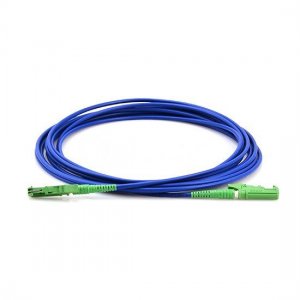
# Fiber Patch Cable: Essential Connectivity Solution for High-Speed Networks
## Introduction to Fiber Patch Cables
Fiber patch cables, also known as fiber jumper cables or fiber optic patch cords, are essential components in modern networking infrastructure. These cables serve as the critical link between devices in high-speed data transmission systems, enabling seamless communication across networks.
## Key Features of Fiber Patch Cables
Fiber patch cables offer several distinct advantages that make them indispensable in today’s digital landscape:
– High bandwidth capacity
– Low signal attenuation
– Immunity to electromagnetic interference
– Lightweight and flexible design
– Secure data transmission
## Types of Fiber Patch Cables
### Single-Mode vs. Multimode
The two primary types of fiber patch cables are:
1. Single-mode fiber (SMF): Designed for long-distance transmission with a smaller core diameter
2. Multimode fiber (MMF): Optimized for shorter distances with a larger core diameter
### Connector Types
Common connector configurations include:
– LC to LC
– SC to SC
– ST to ST
– FC to FC
– Hybrid configurations (e.g., LC to SC)
## Applications in Modern Networks
Fiber patch cables find extensive use in various networking environments:
– Data centers and server rooms
– Telecommunications infrastructure
– Enterprise networks
– Medical imaging systems
– Military and aerospace communications
– Industrial automation systems
## Choosing the Right Fiber Patch Cable
When selecting a fiber patch cable, consider these factors:
– Required transmission distance
– Bandwidth needs
– Environment conditions
– Connector compatibility
– Bend radius requirements
– Cable jacket material
## Installation and Maintenance Best Practices
Proper handling of fiber patch cables ensures optimal performance:
Keyword: Fiber Patch Cable
– Always use protective caps when not in use
– Avoid excessive bending (follow minimum bend radius guidelines)
– Keep connectors clean using proper tools
– Organize cables properly to prevent strain
– Regularly inspect for physical damage
## Future of Fiber Patch Cables
As network speeds continue to increase with technologies like 5G, IoT, and cloud computing, fiber patch cables will remain crucial for:
– Supporting higher data rates (400G and beyond)
– Enabling denser network configurations
– Facilitating emerging technologies like AI and edge computing
– Meeting growing bandwidth demands
Fiber patch cables represent a fundamental building block of modern high-speed networks. Their superior performance characteristics make them the preferred choice for reliable, high-bandwidth connectivity across numerous industries and applications.